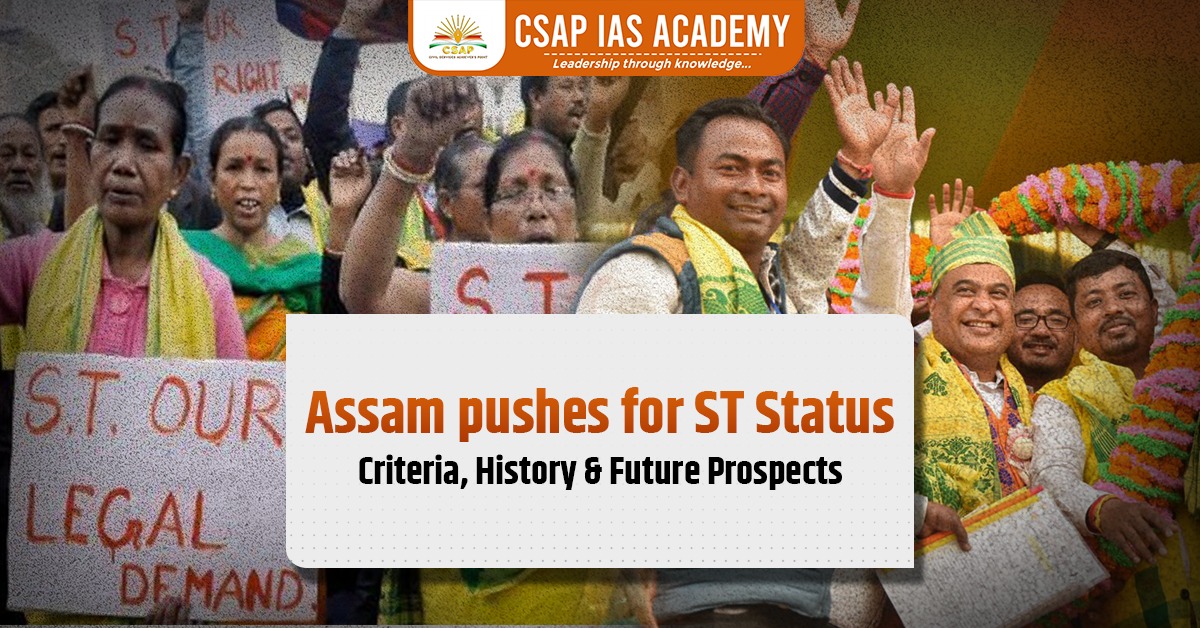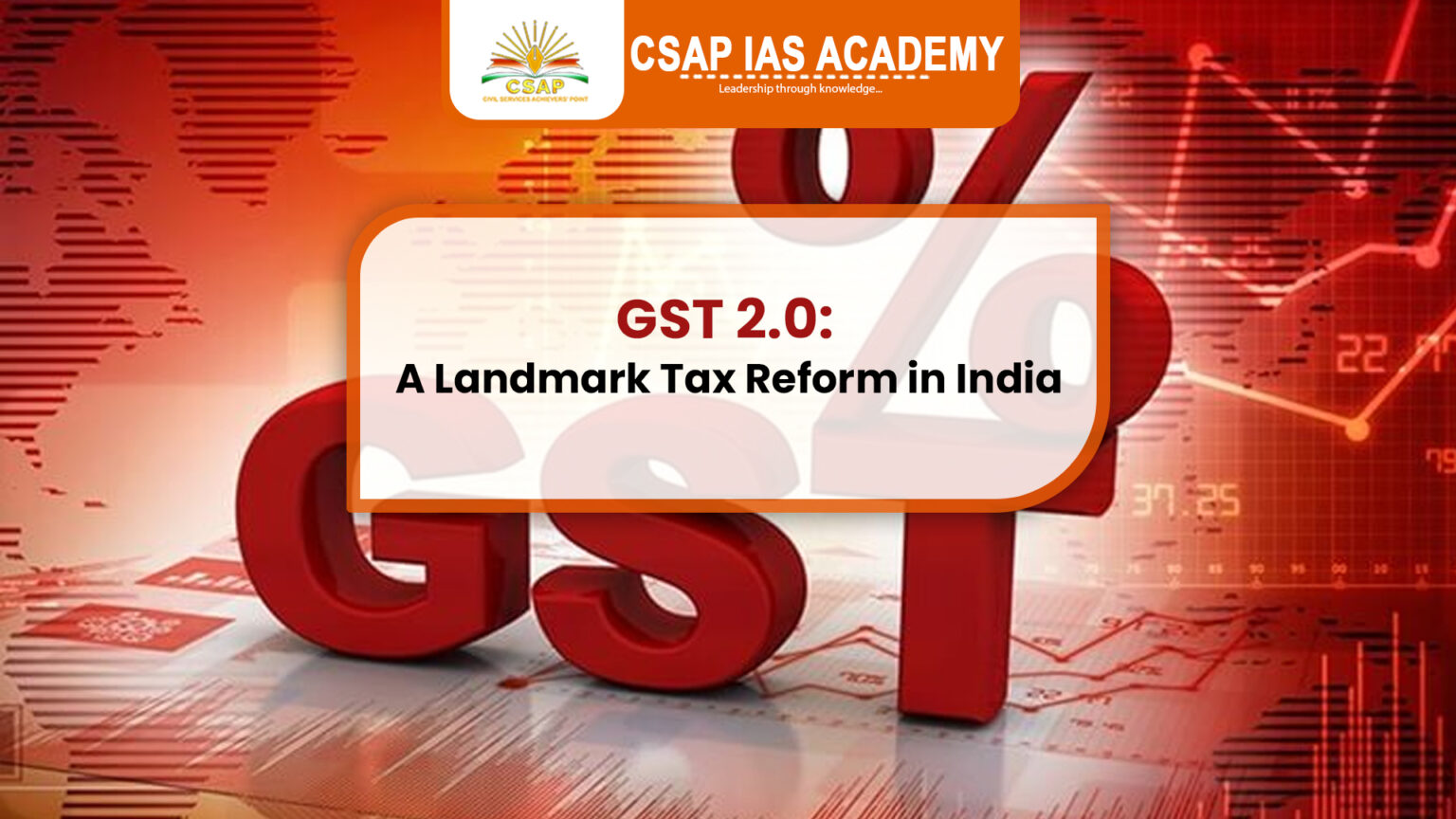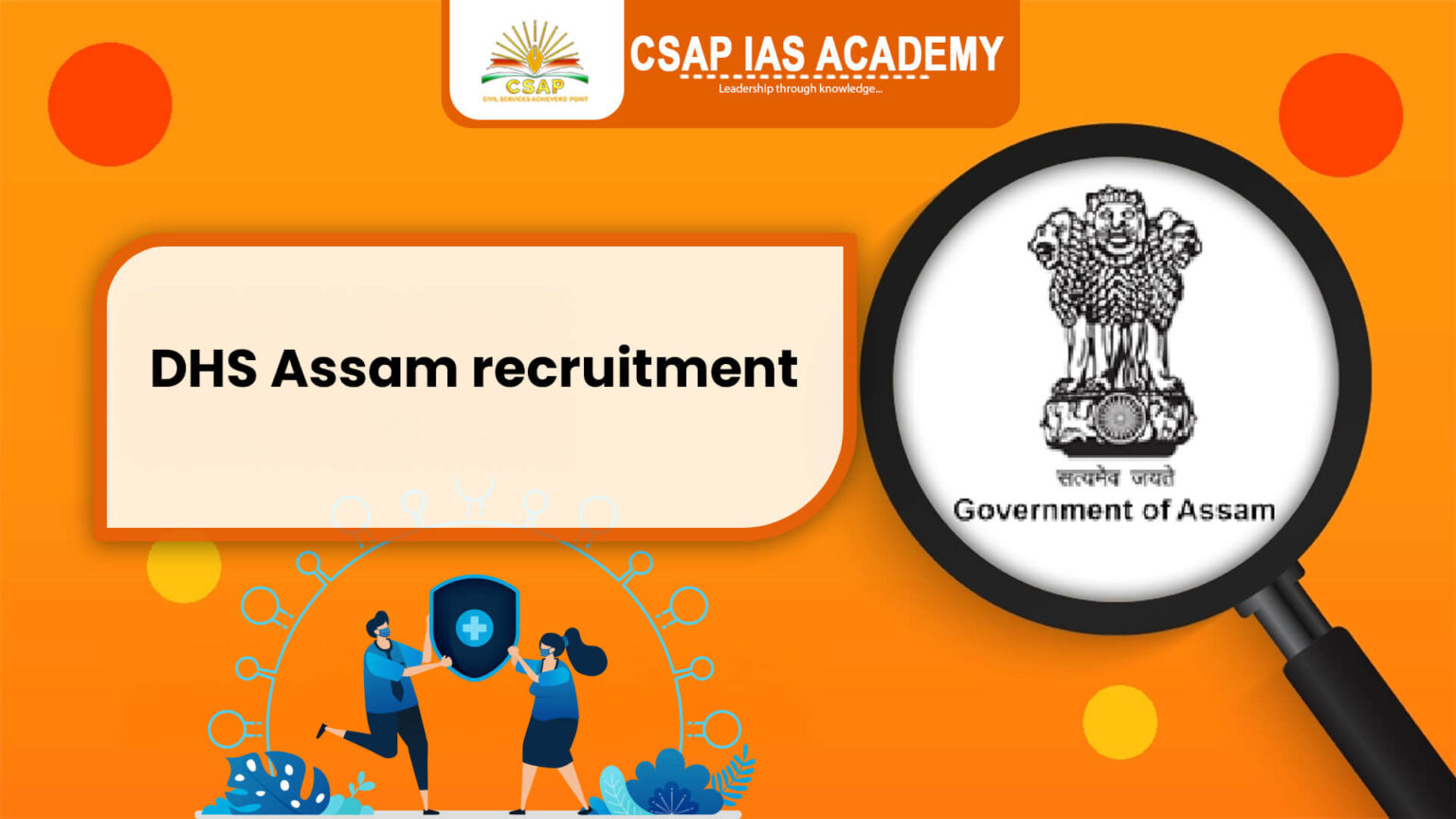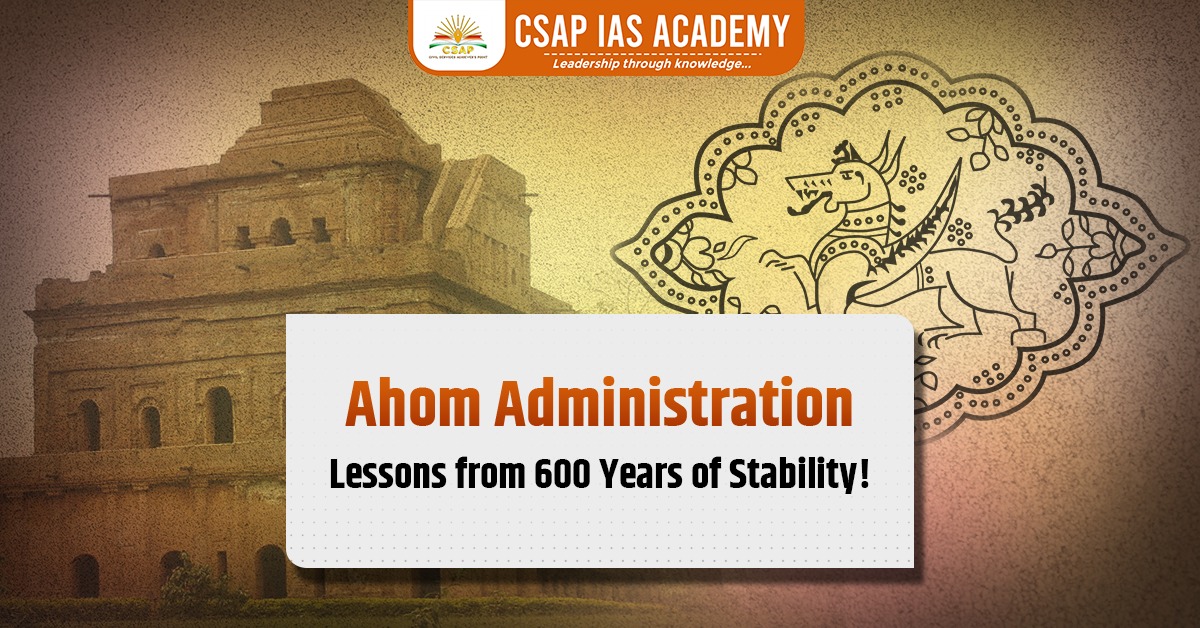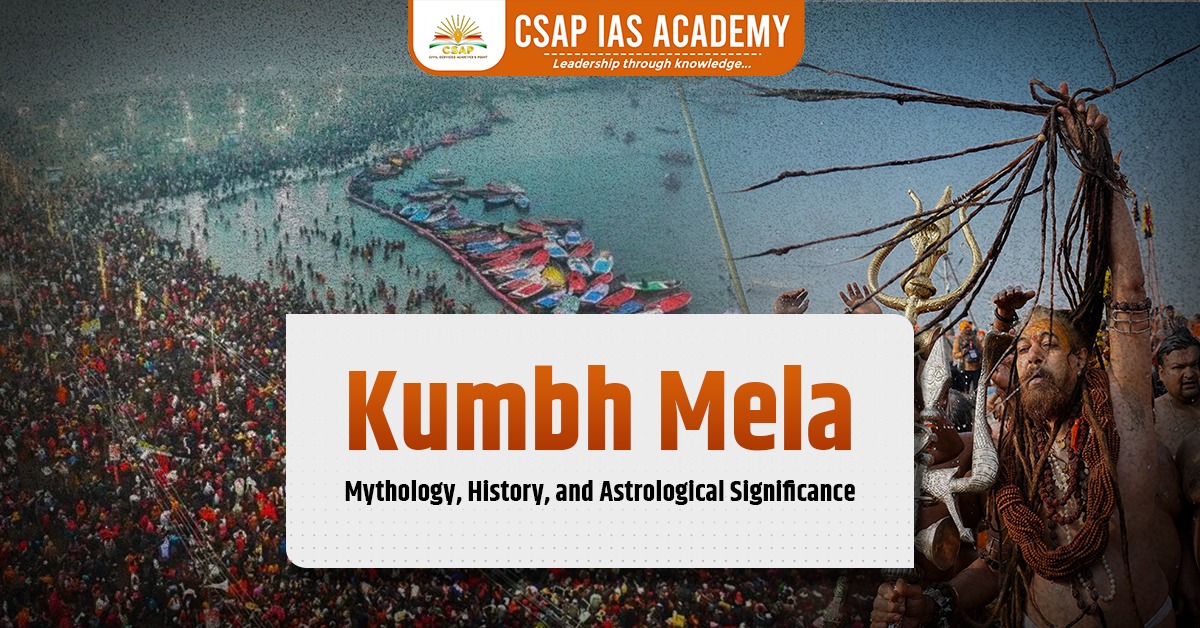The Assam government has taken a significant step by recommending ST status for six communities—Tai Ahom, Chutia, Matak, Moran, Koch Rajbongshi, and Tea Tribes. This long-pending demand has far-reaching implications for reservations, socio-political dynamics, and tribal demographics in Assam. In this blog, we will explore the eligibility criteria for ST status, the historical background of Scheduled Tribes in India, Assam’s tribal demographics, legal provisions for Scheduled Tribe (ST) protection, key government initiatives, and expert committee recommendations.
Why in News?
The Assam government recommended ST status for six communities—Tai Ahom, Chutia, Matak, Moran, Koch Rajbongshi, and Tea Tribes—to the Centre. The proposal follows long-standing demands and awaits legislative approval, impacting reservations, tribal demographics, and socio-political dynamics in Assam.
Criteria for Inclusion in SC/ST List:
For Scheduled Tribes (STs)
- Ethnological traits (ancestry, customs, traditions).
- Distinctive culture (language, rituals, art forms).
- Geographical isolation (remote or difficult-to-access areas).
- Backwardness (social, educational, and economic disadvantages).
For Scheduled Castes (SCs)
- Historical social discrimination, untouchability.
- Social and educational backwardness.
- Customary practices restricting access to public spaces/resources.
Status of Scheduled Tribes in India
Historical Background
- Census 1931: Referred to Scheduled Tribes as “Backward Tribes” living in Excluded and Partially Excluded Areas.
- Government of India Act, 1935: First official recognition of “Backward Tribes” with representation in provincial assemblies.
- Post-Independence: No explicit constitutional definition; 1931 Census classification used initially.
Scheduled Tribes (ST) in Assam (2011 Census)
- Total ST Population: 3,884,371
- Percentage of Assam’s Total Population: 12.44%
Major Scheduled Tribes in Assam (Overall)
- Boro: 35.06%
- Miri: 17.52%
- Karbi: 11.08%
- Rabha: 7.63%
- Kachari: 6.52%
Legal Provisions for ST Protection
- Protection of Civil Rights Act, 1955 – Prevents untouchability and discrimination.
- Scheduled Castes & Scheduled Tribes (Prevention of Atrocities) Act, 1989 – Protects against crimes against SC/ST communities.
- Panchayats (Extension to Scheduled Areas) Act, 1996 (PESA) – Strengthens self-governance in tribal areas.
- Forest Rights Act (FRA), 2006 – Recognizes land and forest rights of STs and traditional forest dwellers.
Key Government Initiatives
- TRIFED (Tribal Cooperative Marketing Development Federation) – Promotes tribal products & handicrafts.
- Digital Transformation of Tribal Schools – Modernization of tribal education.
- Development of Particularly Vulnerable Tribal Groups (PVTGs) – Special schemes for highly marginalized tribes.
- Pradhan Mantri Van Dhan Yojana – Supports tribal entrepreneurship through forest-based products.
Important Committees on ST Status Issues
- Lokur Committee (1965): Provided criteria for ST classification (geographical isolation, backwardness, distinctive culture, etc.).
- Bhuria Commission (2002-2004): Recommended tribal self-governance under PESA Act.
- Xaxa Committee (2013): Assessed socio-economic conditions of STs and suggested affirmative actions.
UPSC Prelims 2016 Question
Consider the following statements:
- The Chief Minister of a State is directly responsible for the welfare of Scheduled Tribes in that state.
- The Constitution of India provides for the appointment of a Special Officer for Scheduled Castes and Scheduled Tribes at the national level.
Which of the statements given above is/are correct?
(a) 1 only
(b) 2 only
(c) Both 1 and 2
(d) Neither 1 nor 2
Answer: (b) 2 only
(Special Officer is the National Commission for Scheduled Castes & Scheduled Tribes, now bifurcated into two separate commissions.)
UPSC Mains 2019
The demand for Scheduled Tribe (ST) status by various communities has raised concerns over the dilution of benefits for existing STs. Critically analyze the process and implications of granting ST status to new communities. (250 words)
Read: Ahom Administration
Download CSAP IAS Academy App:

